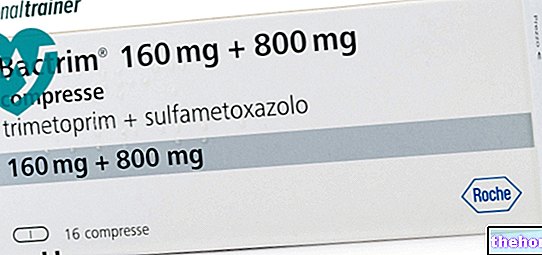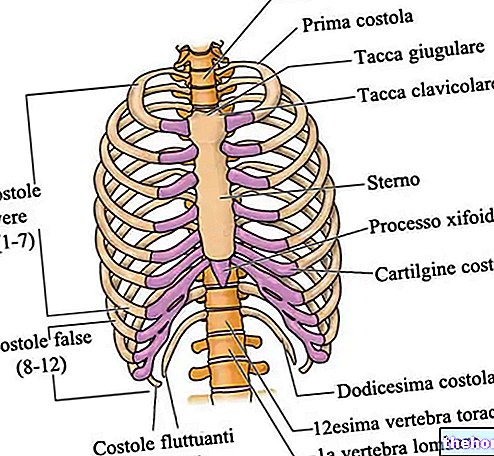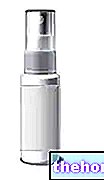Active ingredients: Naproxen (naproxen sodium)
SYNFLEX 275 mg hard capsules
SYNFLEX 550 mg coated tablets
SYNFLEX 550 mg granules for oral suspension
Synflex package inserts are available for pack sizes: - SYNFLEX 275 mg hard capsules, SYNFLEX 550 mg coated tablets, SYNFLEX 550 mg granules for oral suspension
- SYNFLEX 550 mg solution for injection for intramuscular use
Indications Why is Synflex used? What is it for?
PHARMACOTHERAPEUTIC CATEGORY
Non-steroidal anti-rheumatic anti-inflammatory drugs.
THERAPEUTIC INDICATIONS
SYNFLEX is indicated in the symptomatic treatment of painful manifestations, due to musculoskeletal diseases or to surgical and dental interventions. It is also indicated in dysmenorrhea and migraines.
Contraindications When Synflex should not be used
- Hypersensitivity to the active substance or other closely related substances from a chemical point of view and / or any of the excipients.
- Gastroduodenal ulcer and peptic ulcer in progress.
- Ulcerative colitis.
- History of gastrointestinal bleeding or perforation related to previous active treatments or history of recurrent peptic ulcer / haemorrhage (two or more distinct episodes of proven ulceration or bleeding).
- Severe heart failure.
- Due to the possibility of cross-sensitivity, SYNFLEX is contraindicated in patients in whom acetylsalicylic acid and / or other NSAIDs induce allergic manifestations such as asthma, urticaria, rhinitis, anaphylactic or anaphylactoid reactions and have caused nasal polyps.
- The use of the product is contraindicated in children under 2 years of age, as the safety of the product in this age group has not been established.
- Pregnancy and breastfeeding.
- Renal insufficiency (creatinine clearance less than 20 ml / min).
Precautions for use What you need to know before taking Synflex
The use of SYNFLEX should be avoided in conjunction with NSAIDs, including selective COX-2 inhibitors.
Undesirable effects can be minimized by using the lowest effective dose for the shortest possible duration of treatment needed to control symptoms.
Elderly: Elderly patients have an increased frequency of adverse reactions to NSAIDs, especially gastrointestinal bleeding and perforation, which can be fatal (see section Dose, method and time of administration).
Gastrointestinal bleeding, ulceration and perforation: Gastrointestinal bleeding, ulceration and perforation, which can be fatal, have been reported during treatment with all NSAIDs, at any time, with or without warning symptoms or a previous history of serious gastrointestinal events.
Patients with current or history of acute inflammatory diseases of the intestinal tract or who have complained of gastrointestinal disorders following other antirheumatic drugs, should only undergo the treatment under strict medical supervision.
In the elderly and in patients with a history of ulcer, particularly if complicated with haemorrhage or perforation (see section Contraindications), the risk of gastrointestinal bleeding, ulceration or perforation is higher with increased doses of NSAIDs. These patients should start treatment with the lowest available dose. Concomitant use of protective agents (misoprostol or proton pump inhibitors) should be considered for these patients and also for patients taking low doses of aspirin or other drugs that may increase the risk of gastrointestinal events (see below and Interactions section)
Patients with a history of gastrointestinal toxicity, particularly the elderly, should report any unusual gastrointestinal symptoms (especially gastrointestinal bleeding) particularly in the initial stages of treatment.
Caution should be exercised in patients taking concomitant medications that may increase the risk of ulceration or bleeding, such as oral corticosteroids, anticoagulants such as warfarin, selective serotonin reuptake inhibitors or antiplatelet agents such as aspirin (see Interactions section).
When gastrointestinal bleeding or ulceration occurs in patients taking SYNFLEX the treatment should be discontinued.
NSAIDs should be administered with caution to patients with a history of gastrointestinal disease (ulcerative colitis, Crohn's disease) as these conditions may be exacerbated (see section Undesirable effects).
Similar caution should be used when treating patients with severely reduced cardiac, hepatic or renal function. In such patients, periodic monitoring of clinical and laboratory parameters should be used, especially in case of prolonged treatment.
In particular, chronic treatment with SYNFLEX is not recommended in patients with creatinine clearance below 20 ml / minute. Patients with impaired hepatic function should be treated with the lowest effective dose. As with other NSAIDs, elevations in liver function tests may occur as a result of hypersensitivity rather than direct toxicity.
Caution should be exercised in patients with a history of hypertension and / or heart failure as fluid retention and edema have been reported in association with NSAID therapy.
Serious skin reactions, some of them fatal, including exfoliative dermatitis, Stevens-Johnson syndrome and toxic epidermal necrolysis, have been reported very rarely in association with the use of NSAIDs (see section Undesirable effects). higher risk: the onset of the reaction occurs in most cases within the first month of treatment.
SYNFLEX should be discontinued at the first appearance of skin rash, mucosal lesions or any other signs of hypersensitivity.
Like other non-steroidal anti-inflammatory drugs, naproxen sodium should be used with caution in patients with current or previous allergic manifestations as it can cause bronchospasm and other allergic phenomena. Anaphylactic and anaphylactoid reactions can also occur in patients with and without precedent of hypersensitivity to aspirin, other NSAIDs or other naproxen-based products. Anaphylactic and anaphylactoid reactions can also occur in subjects with previous angioedema, bronchospasm, bronchial reactivity (asthma), rhinitis or nasal polyps. Anaphylactic reactions, as well as anaphylactoids, can be fatal. Bronchospasm can be triggered in patients with previous or current allergy or asthma, or with hypersensitivity to acetylsalicylic acid.
Since ocular alterations have been detected in animal studies with non-steroidal anti-inflammatory drugs, it is recommended, in case of prolonged treatments, to carry out periodic ophthalmological checks. SYNFLEX may decrease platelet aggregation and prolong bleeding time. Caution should be exercised in patients with haemostatic disorders and on anticoagulant therapy.
The use of SYNFLEX, like any drug that inhibits prostaglandin synthesis and cyclooxygenase, is not recommended in women who intend to become pregnant.
SYNFLEX administration should be discontinued in women who have fertility problems or who are undergoing fertility investigations.
Naproxen can decrease fever and inflammation, reducing their usefulness as diagnostic symptoms.
Interactions Which drugs or foods may change the effect of Synflex
Tell your doctor or pharmacist if you have recently taken any other medicines, even those without a prescription.
Diuretics, ACE inhibitors and angiotensin II antagonists: NSAIDs may reduce the effect of diuretics and other antihypertensive drugs. In some patients with impaired renal function (e.g. dehydrated patients or elderly patients with impaired renal function) the co-administration of an ACE inhibitor or angiotensin II antagonist and agents that inhibit the cyclo-oxygenase system may lead to further deterioration of renal function, including possible acute renal failure, usually reversible. These interactions should be considered in patients taking SYNFLEX concomitantly with ACE inhibitors or angiotensin II antagonists. Therefore, the combination should be administered with caution, especially in elderly patients.
Patients should be adequately hydrated and monitoring of renal function should be considered after initiation of concomitant therapy.
A decrease in the natriuretic effect of furosemide has been reported following co-administration with some non-steroidal anti-inflammatory drugs.
The association of these drugs with lithium leads to a decrease in renal clearance and consequent increase in the plasma concentration of the latter. SYNFLEX, like other non-steroidal anti-inflammatory drugs, may reduce the antihypertensive effect of propranolol and other beta-blockers.
Probenecid, given at the same time as SYNFLEX, increases its plasma levels and considerably prolongs its half-life.
The combination with methotrexate should be used with caution as naproxen sodium has been reported to reduce tubular secretion of methotrexate in animal models.
It is suggested that naproxen sodium therapy be temporarily suspended 48 hours prior to adrenal function tests, as it may interfere with some 17-ketogenic steroid testing.
Similarly, SYNFLEX can interfere with some tests for urinary 5-hydroxyindolacetic acid.
Naproxen sodium should not be used at the same time as its acid (naproxen) or vice versa as both circulate in the blood in anionic form.
In patients treated with other non-steroidal anti-inflammatory drugs and with coumarin-type anticoagulants, increased prothrombin time and decreased platelet aggregation have been observed.
Anticoagulants: NSAIDs may increase the effects of anticoagulants, such as warfarin (see Precautions section).
Antiplatelet agents and selective serotonin reuptake inhibitors (SSRIs): increased risk of gastrointestinal bleeding (see Precautions section).
Corticosteroids: increased risk of gastrointestinal ulceration or bleeding (see Precautions section).
Due to the high plasma protein binding of naproxen sodium, patients receiving concomitant hydantoin, sulphonylurea, sulfonamides, coumarin anticoagulants, barbiturates, other NSAIDs and acetylsalicylic acid should be monitored for overdose effects. be used simultaneously with gold salts and / or corticosteroids.
It is not recommended to use it at the same time as acetylsalicylic acid and other NSAIDs.
Avoid alcohol intake.
Naproxen sodium may decrease the effectiveness of intrauterine devices.
The use of non-steroidal anti-inflammatory drugs at the same time as quinolone drugs is not recommended.
Warnings It is important to know that:
Medicines such as SYNFLEX may be associated with a modest increased risk of heart attack ("myocardial infarction") or stroke. Any risk is more likely with high doses and prolonged treatments. Do not exceed the recommended dose or duration of treatment.
If you have heart problems, have a history of stroke or think you may be at risk for these conditions (for example if you have high blood pressure, diabetes or high cholesterol or smoke) you should discuss your treatment with your doctor or pharmacist.
Pregnancy and breastfeeding
The product is contraindicated during pregnancy and breastfeeding.
The use of SYNFLEX, like any drug that inhibits prostaglandin synthesis and cyclooxygenase, is not recommended in women who intend to become pregnant.
SYNFLEX administration should be discontinued in women who have fertility problems or who are undergoing fertility investigations.
Inhibition of prostaglandin synthesis can adversely affect pregnancy and / or embryo / fetal development.
Results of epidemiological studies suggest an increased risk of miscarriage and cardiac malformation and gastroschisis after use of a prostaglandin synthesis inhibitor in early pregnancy. The absolute risk of cardiac malformations increased from less than 1% up to approximately 1.5%. The risk has been considered to increase with dose and duration of therapy. In animals, administration of prostaglandin synthesis inhibitors has been shown to cause increased loss of pre- and post-implantation and of embryo-fetal mortality.
In addition, an increased incidence of various malformations, including cardiovascular, has been reported in animals given prostaglandin synthesis inhibitors during the organogenetic period.
During the third trimester of pregnancy, all prostaglandin synthesis inhibitors can expose the fetus to:
- cardiopulmonary toxicity (with premature closure of the arterial duct and pulmonary hypertension);
- renal dysfunction, which can progress to renal failure with oligo-hydroamnios;
the mother and the newborn, at the end of pregnancy, to:
- possible prolongation of bleeding time, and antiplatelet effect which may occur even at very low doses;
- inhibition of uterine contractions resulting in delayed or prolonged labor.
The use of the drug close to childbirth determines the delay of the birth itself; moreover, the drug can cause, if administered in this period, alterations to the haemodynamics of the small circulation of the unborn child, with serious consequences for breathing.
Driving and using machines
Due to the possible onset of lightheadedness, somnolence, dizziness or depression SYNFLEX may impair the ability to drive and use machines. Caution should be exercised by those patients whose activity requires vigilance in case they notice lightheadedness, sleepiness or dizziness or depression while taking naproxen sodium.
Important information about some of the ingredients
SYNFLEX 275 mg capsules contain lactose: if you have been told by your doctor that you have an intolerance to some sugars, contact your doctor before taking this medicine.
Dosage and method of use How to use Synflex: Dosage
Adults - 550 mg at the beginning; then 275 mg every 6-8 hours or 550 mg every 12 hours according to the opinion of the physician.
Elderly - In the treatment of elderly patients, the posology must be carefully established by the doctor who will have to evaluate a possible reduction in the dosages indicated above. Hepatic insufficiency: in patients with impaired hepatic function, periodic monitoring of clinical and laboratory parameters should be resorted to, especially in case of prolonged treatment.
Such patients should be treated with the lowest effective dose.
Renal insufficiency: in patients with impaired renal function, periodic monitoring of clinical and laboratory parameters should be resorted to, especially in the case of prolonged treatment.
Chronic treatment with SYNFLEX is contraindicated in patients with creatinine clearance below 20 ml / minute.
Undesirable effects can be minimized by using the lowest effective dose for the shortest possible duration of treatment needed to control symptoms.
Overdose What to do if you have taken too much Synflex
In case of accidental ingestion / intake of an excessive dose of SYNFLEX, notify your doctor immediately or go to the nearest hospital.
Dizziness, drowsiness, abdominal discomfort, epigastric pain, nausea or vomiting, transient changes in liver and kidney function, hypoprothrombinemia, metabolic acidosis, apnea, disorientation may occur as symptoms of overdose. Gastrointestinal bleeding may occur.
In case of accidental or voluntary ingestion of a large amount of naproxen sodium, gastric emptying should be performed and the normal measures required in these cases implemented. Treatment is symptomatic and there is no specific antidote.
Prompt administration of an adequate amount of activated charcoal significantly reduces drug absorption. Forced diuresis, hemodialysis or haemoperfusion are probably unnecessary because naproxen binds strongly to plasma proteins. Renal and hepatic function should be monitored.
Side Effects What are the side effects of Synflex
Like all medicines, SYNFLEX can cause side effects, although not everybody gets them.
Blood and lymphatic system disorders: There have been sporadic cases of changes such as thrombocytopenia, granulocytopenia, leukopenia, eosinophilia, aplastic or haemolytic anemia.
Alterations of the immune system: anaphylactic or anaphylactoid reactions, including severe ones, have been observed in patients with or without previous exposure to drugs belonging to the class of non-steroidal anti-inflammatory drugs, including SYNFLEX.
Alterations of metabolism and nutrition: hyperkalaemia. Psychiatric disorders: abnormal dreams, depression, insomnia.
Alterations of the nervous system: dizziness, disorientation, convulsions, headache, somnolence, retrobulbar optic neuritis, cognitive dysfunction, difficulty concentrating, aseptic meningitis.
Eye disorders: papillitis, papilloedema, visual disturbances, corneal opacity.
Alteration of the auditory system: hearing disturbances, ringing in the ears, tinnitus, vertigo.
Cardiac alterations: palpitations, tachycardia, congestive heart failure, hypertension, vasculitis.
Edema, hypertension and heart failure have been reported in association with NSAID treatment.
Clinical studies and epidemiological data suggest that the use of some NSAIDs (especially at high doses and for long-term treatment) may be associated with a modest increased risk of arterial thrombotic events (eg myocardial infarction or stroke).
Alterations of the respiratory system, thorax and mediastinum: dyspnoea, asthma, eosinophilic pneumonia, pulmonary edema, edema of the larynx, bronchospasm.
Gastrointestinal disorders: The most commonly observed adverse events are gastrointestinal in nature. Peptic ulcers, gastrointestinal perforation or haemorrhage, sometimes fatal, may occur, particularly in the elderly. Nausea, vomiting, diarrhea have been reported after administration of SYNFLEX. flatulence, constipation, dyspepsia, abdominal and epigastric pain, heartburn, melaena, haematemesis, ulcerative stomatitis, exacerbation of colitis and Crohn's disease, esophagitis and pancreatitis Gastritis have been observed less frequently.
Alterations of the hepatobiliary system: jaundice, hepatitis (some cases have been fatal).
Skin and subcutaneous tissue alteration: rash, pruritus, ecchymosis, urticaria, angioedema, erythema multiforme, erythema nodosum, fixed drug erythema, lichen planus, purpura, bullous reactions including Stevens-Johnson syndrome and toxic epidermal necrolysis (very rarely ), photosensitivity reactions, alopecia.
Alterations of the musculoskeletal system and connective tissue: myalgia, muscle weakness.
Renal and urinary disorders: haematuria, decreased renal function, interstitial nephritis, nephrotic syndrome, renal failure, renal papillary necrosis.
Disorders of the reproductive system and breast: female infertility.
General disorders and alteration of the administration site: edema, excessive thirst, fever and chills, malaise.
Investigations: liver function test abnormal, hypercreatinemia.
If any of the side effects gets serious, or if you notice any side effects not listed in this leaflet, please tell your doctor or pharmacist.
Expiry and Retention
KEEP THE MEDICINAL PRODUCT OUT OF THE REACH AND SIGHT OF CHILDREN
Check the expiration date on the package. Medicines should not be disposed of via wastewater or household waste. Ask your pharmacist how to dispose of medicines you no longer use. This will help protect the environment. Do not use the medicine after the expiry date indicated on the package
COMPOSITION
HARD CAPSULES 275 mg
Each capsule contains
Active principle
Naproxen sodium 275 mg
Excipients
Microgranular cellulose, lactose, magnesium stearate, purified water
L"operculum consists of
Gelatin, titanium dioxide
COATED TABLETS 550 mg
Each tablet contains
Active principle
Naproxen sodium 550.0 mg
Excipients
Microgranular cellulose, povidone, talc, magnesium stearate, purified water
Coating
hypromellose, macrogol 8000, titanium dioxide, E 110 (lacquer)
GRANULATE FOR ORAL SUSPENSION 550 mg
Each sachet contains:
Active principle
Naproxen sodium 550.0 mg
Excipients
Microcrystalline cellulose, sodium chloride, sodium carboxymethylcellulose, povidone, citrus flavor, citric acid, fumaric acid, saccharin, icing sugar.
PHARMACEUTICAL FORM AND CONTENT
SYNFLEX 275 mg hard capsules 30 capsules 275 mg
SYNFLEX 550 mg coated tablets 30 tablets 550 mg 10 tablets 550 mg
SYNFLEX 550 granules for oral suspension 30 sachets 550 mg
Source Package Leaflet: AIFA (Italian Medicines Agency). Content published in January 2016. The information present may not be up-to-date.
To have access to the most up-to-date version, it is advisable to access the AIFA (Italian Medicines Agency) website. Disclaimer and useful information.
01.0 NAME OF THE MEDICINAL PRODUCT
SYNFLEX
02.0 QUALITATIVE AND QUANTITATIVE COMPOSITION
Active principle
Synflex 275 mg hard capsules: Naproxen sodium 275 mg
Synflex 550 mg coated tablets: naproxen sodium 550 mg
Synflex 550 mg suppositories: naproxen sodium 550 mg
Synflex 275 mg suppositories: naproxen sodium 275 mg
Synflex 550 mg granules for oral suspension: naproxen sodium 550 mg
For the full list of excipients, see section 6.1.
03.0 PHARMACEUTICAL FORM
Hard capsules.
Coated tablets.
Suppositories.
Granules for oral suspension.
04.0 CLINICAL INFORMATION
04.1 Therapeutic indications
The Synflex is indicated in the treatment of painful manifestations, due to musculoskeletal diseases or to surgical and dental interventions. It is also indicated in dysmenorrhea and migraines.
04.2 Posology and method of administration
Adults: 550 mg at the beginning; then 275 mg every 6-8 hours or 550 mg every 12 hours according to the doctor's opinion.
Senior citizens: in the treatment of elderly patients the posology must be carefully established by the doctor who will have to evaluate a possible reduction of the dosages indicated above.
Children: (limited to the painful manifestations of juvenile rheumatoid arthritis) over 6 years of age, 1 suppository of 275 mg once a day (from 6 to 11 years) or 2 times a day (children from 12 to 14 years) at a distance 12 hours, for a maximum period of 7 days.
Hepatic insufficiency: In patients with impaired hepatic function, periodic monitoring of clinical and laboratory parameters should be resorted to, especially in case of prolonged treatment.
Such patients should be treated with the lowest effective dose (see section 4.4).
Kidney failure: in patients with impaired renal function it is advisable to resort to periodic monitoring of clinical and laboratory parameters, especially in case of prolonged treatment.
Chronic treatment with Synflex is contraindicated in patients with creatinine clearance below 20 ml / minute (see section 4.4).
Undesirable effects can be minimized by using the lowest effective dose for the shortest possible duration of treatment needed to control symptoms (see section 4.4).
04.3 Contraindications
- Hypersensitivity to the active substance or other closely related substances from a chemical point of view and / or any of the excipients
- Gastroduodenal ulcer and peptic ulcer in progress
- Ulcerative colitis
- History of gastrointestinal bleeding or perforation related to previous active treatments or history of recurrent peptic ulcer / haemorrhage (two or more distinct episodes of proven ulceration or bleeding)
- Severe heart failure
- Due to the possibility of cross-sensitivity, Synflex is contraindicated in patients in whom acetylsalicylic acid and / or other NSAIDs induce allergic manifestations, such as asthma, urticaria, rhinitis, anaphylactic or anaphylactoid reactions and have caused nasal polyps
- The use of the product is contraindicated in children under the age of 2 years, as the safety of the product in this age group has not been established
- Pregnancy and breastfeeding
- Renal insufficiency (creatinine clearance less than 20ml / min)
04.4 Special warnings and appropriate precautions for use
The use of Synflex should be avoided in conjunction with NSAIDs, including selective COX-2 inhibitors.
Undesirable effects can be minimized with the use of the lowest effective dose for the shortest possible duration of treatment needed to control symptoms (see section 4.2 and the paragraphs below on gastrointestinal and cardiovascular risks).
Cardiovascular and cerebrovascular effects
Adequate monitoring and instruction are required in patients with a history of mild to moderate hypertension and / or congestive heart failure as fluid retention and edema have been reported in association with NSAID treatment.
Clinical studies and epidemiological data suggest that the use of coxibs and some NSAIDs (especially at high doses and for long-term treatments) may be associated with a modest increased risk of arterial thrombotic events (eg myocardial infarction or stroke) Although some data suggest that the use of naproxen (1000 mg / day) may be associated with a lower risk, some risks cannot be excluded.
Patients with uncontrolled hypertension, congestive heart failure, established ischemic heart disease, peripheral arterial disease and / or cerebrovascular disease should only be treated with naproxen after careful consideration. Similar considerations should be made before initiating long-term treatment in patients with risk factors for cardiovascular events (eg, hypertension, hyperlipidaemia, diabetes mellitus, smoking).
Senior citizens
Elderly patients have an increased frequency of adverse reactions to NSAIDs, especially gastrointestinal bleeding and perforation, which can be fatal (see section 4.2).
Gastrointestinal bleeding, ulceration and perforation
Gastrointestinal bleeding, ulceration and perforation, which can be fatal, have been reported during treatment with all NSAIDs at any time, with or without warning symptoms or a previous history of serious gastrointestinal events.
Patients with current or previous inflammatory diseases of the gastrointestinal tract or who have complained of gastrointestinal disorders following other antirheumatic drugs, should only undergo the treatment under strict medical supervision.
In the elderly and in patients with a history of ulcer, particularly if complicated with haemorrhage or perforation (see section 4.3), the risk of gastrointestinal bleeding, ulceration or perforation is higher with increasing doses of NSAIDs. These patients should start treatment with the lowest available dose.Concomitant use of protective agents (misoprostol or proton pump inhibitors) should be considered for these patients and also for patients taking low dose aspirin or other drugs that may increase the risk of gastrointestinal events (see below and section 4.5).
Patients with a history of gastrointestinal toxicity, particularly the elderly, should report any unusual gastrointestinal symptoms (especially gastrointestinal bleeding) particularly in the initial stages of treatment.
Caution should be exercised in patients taking concomitant medications that may increase the risk of ulceration or bleeding, such as oral corticosteroids, anticoagulants such as warfarin, selective serotonin reuptake inhibitors or antiplatelet agents such as aspirin (see section 4.5).
When gastrointestinal bleeding or ulceration occurs in patients taking Synflex the treatment should be discontinued.
NSAIDs should be administered with caution to patients with a history of gastrointestinal disease (ulcerative colitis, Crohn's disease) as these conditions may be exacerbated (see section 4.8 - undesirable effects).
Particular caution should be exercised when treating patients with severely reduced cardiac, hepatic or renal function. In such patients, periodic monitoring of clinical and laboratory parameters should be used, especially in case of prolonged treatment.
In particular, chronic treatment with Synflex is not recommended in patients with creatinine clearance below 20 ml / minute. Patients with impaired hepatic function should be treated with the lowest effective dose. As with other NSAIDs, elevations in liver function tests may occur as a result of hypersensitivity rather than direct toxicity. Some serious hepatic reactions, including jaundice and hepatitis, some with fatal outcome, have been reported following administration of the product, as well as other NSAIDs.
Caution should be exercised in patients with a history of hypertension and / or heart failure as fluid retention and edema have been reported in association with NSAID therapy.
Serious skin reactions, some of them fatal, including exfoliative dermatitis, Stevens-Johnson syndrome and toxic epidermal necrolysis, have been reported very rarely in association with the use of NSAIDs (see section 4.8). In the early stages of therapy, patients appear to be at higher risk: the onset of the reaction occurs in most cases within the first month of treatment.
Synflex should be discontinued at the first appearance of skin rash, mucosal lesions or any other signs of hypersensitivity.
Like other non-steroidal anti-inflammatory drugs, naproxen sodium should be used with caution in patients with current or previous allergic manifestations as it can cause bronchospasm and other allergic phenomena. Anaphylactic and aniphylaactoid reactions can also occur in patients with and without precedent of hypersensitivity to aspirin, other NSAIDs or other naproxen-based products. Anaphylactic and aniphylactoid reactions can also occur in subjects with previous angioedema, bronchospasm, bronchial reactivity (asthma), rhinitis or nasal polyps. Anaphylactic reactions, as well as aniphylaactoids, can be fatal. Bronchospasm can be triggered in patients with previous or ongoing allergy or asthma, or with hypersensitivity to acetylsalicylic acids.
Since ocular alterations have been detected in animal studies with non-steroidal anti-inflammatory drugs, it is recommended, in case of prolonged treatments, to carry out periodic ophthalmological checks.
Synflex may decrease platelet aggregation and prolong bleeding time. Caution should be exercised when treating patients with haemostatic disorders or on anticoagulant therapy.
Naproxen can reduce fever and inflammation, reducing their usefulness as symptoms for a diagnosis.
The use of Synflex as well as any drug that inhibits prostaglandin synthesis and cyclooxygenase is not recommended in women intending to become pregnant.
Synflex should be discontinued in women who have fertility problems or who are undergoing fertility investigations.
Patients with rare hereditary problems of galactose intolerance, the Lapp-lactase deficiency, or glucose-galactose malabsorption should not take this medicine.
04.5 Interactions with other medicinal products and other forms of interaction
Diuretics, ACE inhibitors and angiotensin II antagonists: NSAIDs may reduce the effect of diuretics and other antihypertensive drugs. In some patients with impaired renal function (eg dehydrated patients or elderly patients with impaired renal function) the co-administration of an ACE inhibitor or an antagonist of blood angiotensin II and agents that inhibit the cyclo-oxygenase system may lead to further deterioration of renal function, including possible acute renal failure, usually reversible. These interactions should be considered in patients taking Synflex concomitantly with ACE inhibitors or angiotensin II antagonists. Therefore, the combination should be administered with caution, especially in elderly patients.
Patients should be adequately hydrated and monitoring of renal function should be considered after initiation of concomitant therapy.
A decrease in the natriuretic effect of furosemide has been reported following co-administration with some non-steroidal anti-inflammatory drugs.
The association of these drugs with lithium leads to a decrease in renal clearance and consequent increase in the plasma concentration of the latter.
Synflex, like other non-steroidal anti-inflammatory drugs, may reduce the antihypertensive effect of propranolol and other beta-blockers.
Probenecid, given at the same time as Synflex, increases its plasma levels and considerably prolongs its half-life.
The combination with methotrexate should be used with caution as naproxen sodium has been reported to reduce tubular secretion of methotrexate in animal models.
It is suggested that naproxen sodium therapy be temporarily suspended 48 hours prior to adrenal function tests, as it may interfere with some 17-ketogenic steroid testing.
Similarly, Synflex may interfere with some tests for urinary 5-hydroxyindolacetic acid.
Synflex should not be used at the same time as its acid (naproxen) or vice versa as both circulate in the blood in anionic form.
In patients treated with other non-steroidal anti-inflammatory drugs and with coumarin-type anticoagulants, increased prothrombin time and decreased platelet aggregation have been observed.
Anticoagulants: NSAIDs may increase the effects of anticoagulants, such as warfarin (see section 4.4).
Antiplatelet agents and selective serotonin reuptake inhibitors (SSRIs): increased risk of gastrointestinal bleeding (see section 4.4).
Corticosteroids: increased risk of gastrointestinal ulceration or bleeding (see section 4.4).
Due to the high plasma protein binding of Synflex, patients receiving concomitant hydantoin or sulfonamides, sulfonylureas, coumarin anticoagulants, barbiturates, other NSAIDs and acetylsalicylic acid should be monitored for overdose effects. Naproxen sodium may be used simultaneously with gold salts and / or corticosteroids.
Use at the same time as acetylsalicylic acid or other NSAIDs is not recommended.
Avoid alcohol intake.
Naproxen sodium may decrease the effectiveness of intrauterine devices.
The use of non-steroidal anti-inflammatory drugs at the same time as quinolone drugs is not recommended.
04.6 Pregnancy and lactation
The use of Synflex, as with any prostaglandin and cyclooxygenase inhibitor drug, is not recommended for women intending to become pregnant.
Synflex administration should be discontinued in women who have fertility problems or who are undergoing fertility investigations (see section 4.4).
The product is contraindicated (see section 4.3) during pregnancy and lactation.
Inhibition of prostaglandin synthesis can adversely affect pregnancy and / or embryo / fetal development.
Results of epidemiological studies suggest an increased risk of miscarriage and cardiac malformation and gastroschisis after use of a prostaglandin synthesis inhibitor in early pregnancy. The absolute risk of cardiac malformations increased from less than 1% up to approximately 1.5%. The risk has been considered to increase with dose and duration of therapy. In animals, administration of prostaglandin synthesis inhibitors has been shown to cause increased loss of pre- and post-implantation and of embryo-fetal mortality.
In addition, an increased incidence of various malformations, including cardiovascular, has been reported in animals given prostaglandin synthesis inhibitors during the organogenetic period.
During the third trimester of pregnancy, all prostaglandin synthesis inhibitors can expose the fetus to:
- cardiopulmonary toxicity (with premature closure of the arterial duct and pulmonary hypertension);
- renal dysfunction, which can progress to renal failure with oligo-hydroamnios;
• the mother and the newborn, at the end of pregnancy, to:
- possible prolongation of bleeding time, and antiplatelet effect which may occur even at very low doses;
- inhibition of uterine contractions resulting in delayed or prolonged labor.
The use of the drug close to childbirth determines the delay of the birth itself; moreover, the drug can cause, if administered in this period, alterations to the haemodynamics of the small circulation of the unborn child, with serious consequences for breathing.
04.7 Effects on ability to drive and use machines
Due to the possible onset of lightheadedness, somnolence, dizziness or depression, Synflex may impair the ability to drive and use machines. Caution should be exercised by those patients whose activity requires vigilance in case they notice lightheadedness, sleepiness or dizziness or depression during naproxen therapy.
04.8 Undesirable effects
Changes in the blood and lymphatic system
There have been sporadic cases of abnormalities such as thrombocytopenia, granulocytopenia, leukopenia, eosinophilia, aplastic or haemolytic anemia.
Alterations of the immune system
Anaphylactic or anaphylactoid reactions, including severe ones, have been observed in patients with or without previous exposure to drugs belonging to the class of non-steroidal anti-inflammatory drugs, including Synflex.
Alterations of metabolism and nutrition
Hyperkalemia.
Psychiatric disorders
Abnormal dreams, depression, insomnia.
Alterations of the nervous system
Dizziness, disorientation, convulsions, headache, somnolence, retrobulbar optic neuritis, cognitive dysfunction, difficulty concentrating, aseptic meningitis.
Eye disorders
Papillitis, papilloedema, visual disturbances, corneal opacity.
Alteration of the auditory system
Hearing disturbances, ringing in the ears, tinnitus, vertigo.
Cardiac alterations
Palpitations, tachycardia, congestive heart failure, hypertension, vasculitis.
Edema, hypertension and heart failure have been reported in association with NSAID treatment. Clinical studies and epidemiological data suggest that the use of some NSAIDs (especially at high doses and for long-term treatment) may be associated with a modest increased risk of arterial thrombotic events (eg, myocardial infarction or stroke) ( see section 4.4).
Alterations of the respiratory system, thorax and mediastinum
Dyspnoea, asthma, eosinophilic pneumonia, pulmonary edema, laryngeal edema, bronchospasm.
Alterations of the gastrointestinal system
The most commonly observed adverse events are gastrointestinal in nature. Peptic ulcers, gastrointestinal perforation or haemorrhage, sometimes fatal, may occur, particularly in the elderly (see section 4.4). Nausea, vomiting, diarrhea, flatulence, constipation, dyspepsia, abdominal and epigastric pain, heartburn, melaena, haematemesis, ulcerative stomatitis, exacerbation of colitis and Crohn's disease (see section 4.4), oesophagitis and pancreatitis.
Gastritis has been observed less frequently.
Alterations of the hepatobiliary system
Jaundice, hepatitis (some cases have been fatal).
Alteration of the skin and subcutaneous tissue
Rash, pruritus, ecchymosis, urticaria, angioedema, erythema multiforme, erythema nodosum, fixed drug erythema, lichen planus, purpura, bullous reactions including Stevens-Johnson syndrome and toxic epidermal necrolysis (very rarely), photosensitivity reactions, alopecia.
Alterations of the musculoskeletal system and connective tissue
Myalgia, muscle weakness.
Renal and urinary disorders
Haematuria, decreased renal function, interstitial nephritis, nephrotic syndrome, renal failure, renal papillary necrosis.
Disorders of the reproductive system and breast: female infertility.
General disorders and alteration of the administration site
Edema, excessive thirst, fever and chills, malaise. Minor local side effects have also been reported with the suppository formulation, such as rectal pain and irritation, burning and itching.
There have also been isolated cases of rectal haemorrhage, tenesmus and proctitis
Diagnostic investigations
Abnormal liver function test, hypercreatinemia.
04.9 Overdose
Dizziness, drowsiness, abdominal discomfort, epigastric pain, nausea or vomiting, transient changes in liver and kidney function, hypoprothrombineamia, metabolic acidosis, apnea, disorientation may occur as symptoms of overdose. Gastrointestinal bleeding may occur.
In the event of accidental or deliberate ingestion of a large amount of naproxen sodium, gastric emptying should be performed and the normal measures required in these cases should be implemented. Treatment is symptomatic and there is no specific antidote.
The prompt administration of an adequate quantity of activated charcoal can significantly reduce the absorption of the drug.
Forced diuresis, hemodialysis or hemoperfusion are probably useless because naproxen binds strongly to plasma proteins. Renal and hepatic function should be monitored.
05.0 PHARMACOLOGICAL PROPERTIES
05.1 Pharmacodynamic properties
Therapeutic class: non-steroidal anti-inflammatory / antirheumatic drugs, derivatives of propionic acid.
ATC code: M01AE02
As for other non-steroidal anti-inflammatory drugs, the mechanism of action of naproxen is linked to the reversible inhibition of the enzyme cyclo-oxygenase (COX), responsible for the conversion of arachidonic acid into cyclic endoperoxides, such as to reduce the synthesis of thromboxanes (TXA2) , prostacyclin (PGI2) and prostaglandins (PG). Several studies have also highlighted the hypothesis that naproxen may decrease the levels of some proinflammatory cytokines (IL-6) and neuropeptides (substance P) in plasma and synovial fluid.
05.2 Pharmacokinetic properties
Absorption
In humans, naproxenen sodium is absorbed very rapidly by the oral route and plasma concentrations reach their peak on average 1-2 hours after administration.
Steady state is reached on the first day.
Absorption via the rectum is a little slower but allows for longer therapeutic plasma levels.
Distribution
The plasma protein binding is 99%. Naproxen is rapidly distributed in the synovial fluid with a Cmax of 36 mg / l after 7.5 h.
Metabolism
The main site of biotransformation processes is the liver and is mediated by cytochromes CYP 2C9 and CYP 1A2. The metabolites thus produced are 6-O-demethyl-naproxen (which has a COX inhibitory power 100 times lower than naproxen), inactive conjugates (57% glucuronides) and demethylates.
Excretion
Naproxen is mainly excreted via the urine (95%) in part unchanged (about 10%) and in part metabolized (6-O-desmethyl naproxen), in free and conjugated form. Biliary elimination accounts for 1-2% (mainly as conjugates). The plasma half-life of naproxen is approximately 13 hours.
05.3 Preclinical safety data
Non-clinical data reveal no special hazard for humans based on conventional studies of safety pharmacology, repeated dose toxicity, genotoxicity, carcinogenic potential, reproductive toxicity.
06.0 PHARMACEUTICAL INFORMATION
06.1 Excipients
Capsules
Microgranular cellulose, lactose, magnesium stearate, purified water.
The operculum is made up of: gelatin, titanium dioxide.
Coated tablets
Microgranular cellulose, povidone, talc, magnesium stearate, purified water.
Coating: hypromellose, macrogol 8000, titanium dioxide, E110 (lacquer).
Suppositories
Semi-synthetic solid glycerides, calcium levulinate dihydrate.
Pediatric Suppositories
Semi-synthetic glycerides.
Granules for oral suspension
Microcrystalline cellulose, sodium chloride, sodium carboxymethylcellulose, povidone, citrus flavor, citric acid, fumaric acid, saccharin, icing sugar.
06.2 Incompatibility
None.
06.3 Period of validity
Hard capsules: 60 months.
Coated tablets: 36 months.
Suppositories: 24 months.
Granules for oral suspension: 36 months.
In intact packaging.
06.4 Special precautions for storage
This medicinal product does not require any special storage conditions.
06.5 Nature of the immediate packaging and contents of the package
Hard capsules and coated tablets: PVC and aluminum blisters
- 30 capsules of 275 mg
- 30 coated tablets 550 mg
- 10 coated tablets 550 mg
Suppositories: thermowelded PVC valves
- 10 suppositories 550 mg
- 10 suppositories 275 mg
Granules for oral suspension: coupled with paper, aluminum and polyethylene
- 30 sachets 550 mg
06.6 Instructions for use and handling
None.
07.0 MARKETING AUTHORIZATION HOLDER
RECORDATI - Industria Chimica e Farmaceutica S.p.A. - MILAN - Via Civitali 1
Exclusive dealership for sale: ALMIRALL S.p.A. Via Messina, 38 - Tower C - 20154 Milan.
08.0 MARKETING AUTHORIZATION NUMBER
A.I.C. n. 024722011 - 30 capsules of 275 mg
A.I.C. n. 024722112 - 10 coated tablets 550 mg
A.I.C. n. 024722047 - 30 coated tablets 550 mg
A.I.C. n. 024722023 - 10 suppositories 550 mg
A.I.C. n. 024722035 - 10 suppositories 275 mg
A.I.C. n. 024722086 - 30 granules sachets for oral suspension 550 mg
09.0 DATE OF FIRST AUTHORIZATION OR RENEWAL OF THE AUTHORIZATION
First authorization: June 1982
Renewal of the authorization: May 2005
10.0 DATE OF REVISION OF THE TEXT
July 2008




























